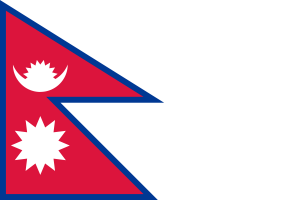Language/Nepali-individual-language/Grammar/How-to-Use-Be
Hi Nepali (individual language) learners! 😊
In this lesson, we will learn how to use "be" in Nepali (individual language). "Be" is an important verb as it helps in forming the present continuous tense and it is also used to describe a state of being. So, let's get started and learn how to use it correctly.
What is "Be" in Nepali (individual language)?
"Be" in Nepali (individual language) is translated as हुनु (hunu). It is used to indicate a state of being or existence.
Examples:
| Nepali (individual language) | Pronunciation | English |
|---|---|---|
| हुनु (hunu) | hu-nu | to be |
| मैं छु (mai chu) | mai chuh | I am |
| तपाईंको नाम के हो? (tapaaiko naam ke ho?) | ta-pa-iiko naam ke ho? | What is your name? |
Present Continuous Tense
"Be" is also used to form the present continuous tense in Nepali (individual language).
To construct the present continuous tense in Nepali (individual language), we use the following structure:
Template:कर्ता + हुनु (hunu) + Template:कार्य (Present participle verb)
The present participle in Nepali (individual language) is formed by adding -दैजाने (-daijaane) to the verb stem.
Examples:
| Nepali (individual language) | Pronunciation | English |
|---|---|---|
| मैं सुत्न लागेको छु। (mai sutnaa laageko chu) | mai sut-nah laa-ge-ko chuh | I am sleeping. |
| तपाईंले काम गर्दै छिन्। (tapaaile kaam gardai chin) | ta-paa-i-le kaam gar-dai chin | You are working. |
| उनी खाना खाए जानेछन्। (uni khaanaa khaae jaanechhan) | u-ni khaa-naa kha-ae ja-ne-chhan | They are going to eat food. |
Note: In Nepali (individual language), the present continuous tense is also formed by using the verb बस्नु (basnu) which means "to sit" along with -दैजाने (-daijaane) as a present participle verb. For example,
| Nepali (individual language) | Pronunciation | English |
|---|---|---|
| म सुत्दै छु। (ma sutdai chu) | ma sut-dai chuh | I am sleeping. |
| तिमी काम गर्दै छौ। (timi kaam gardai chau) | ti-mi kaam gar-dai chau | You are working. |
| हामी खेल्दै छौं। (haami kheldaai chhaum) | haa-mi khel-dai chhaum | We are playing. |
Vocabulary
Here are some vocabulary words that are related to "Be" in Nepali (individual language):
| Nepali (individual language) | Pronunciation | English |
|---|---|---|
| हुनु (hunu) | hu-nu | to be |
| सुत्नु (sutnu) | sut-nu | to sleep |
| खाना खानु (khaanaa khaanu) | khaa-naa khaa-nu | to eat food |
| बास्नु (basnu) | ba-snu | to sit |
| बोल्नु (bolnu) | bo-lu-nu | to speak |
Examples in Dialogue
To better understand how to use "Be" in Nepali (individual language), let's see an example in dialogue:
- Person 1: तपाईं कति वर्षकी हुनुहुन्छ? (tapaaee katai barshaki hunuhunchha?) (How old are you?)
- Person 2: म चालीस वर्षको हुनुहुन्छ। (ma chaalees varshako hunuhunchha.) (I am forty years old.)
Practice Exercise
Translate the following sentences from English to Nepali (individual language):
1. I am drinking water. 2. She is studying in the library. 3. They are playing soccer. 4. He is watching a movie. 5. We are eating dinner.
Conclusion
In conclusion, "be" is a very important verb in Nepali (individual language) as it indicates a state of being or existence and helps in constructing the present continuous tense. By using the correct form of "be" along with the present participle verb, you can express what you are doing at present. To improve your Nepali (individual language) Grammar, you can also use the Polyglot Club website. Find native speakers and ask them any questions!
➡ If you have any questions, please ask them in the comments section below.
➡ Feel free to edit this wiki page if you think it can be improved. 😎
Related Lessons
- Gender
- How to Use Have
- Give your Opinion
- Future Tense
- Verbs kriyaharu क्रियाहरू
- Pronouns
- Nouns
- Questions
- Adjectives

